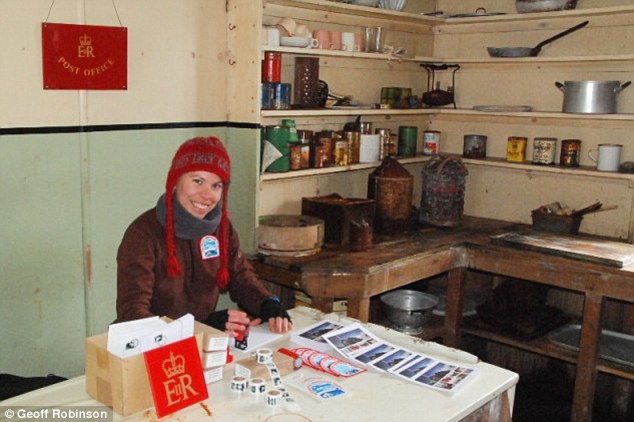In 2013 a woman decided to re-open Antarctica’s Post Office after it had been abandoned over 50 years ago. The young researcher named Anna Malaos also goes by the name of “Polar Postmistress”. She works from a hut on Detaille Island on the Antarctic Peninsula that has no telephone, Internet access, electricity, or even running water.
She decided to re-open the Post Office to provide an international mail service. She works on a small historic British base on a small outcrop of rock. She is surrounded by icebergs, glaciers, and minke whales every day. Malaos is an expert in Antarctica and works as an operations manager at the Antarctic Heritage Trust. She works daily in -10 degrees Celsius and jokes that the temperature makes it quite difficult to stick on stamps. The Post Office will have to be closed at the end of the season when there is 24-hour darkness.
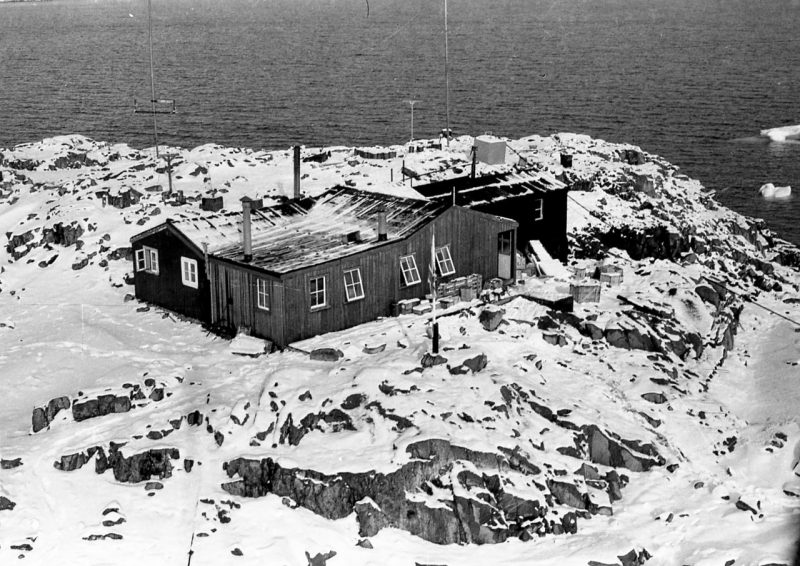
Detaille Island was a British base that was built during the 1950s. It was very common then that all British bases had their own Post Office. The huts on the island were built around 1956 for people surveying the Antarctic Peninsula.
The particular base that Malaos is working on had contributed geological and meteorological findings to the work of the International Geophysical Year of Cooperation during the year 1957. The base closed in 1959 when solid sea ice prevented it from getting restocked for the season. The men who worked there at the time had abandoned the base and only took their personal possessions with them, leaving everything else behind. The base today is a constant reminder of the science and living conditions that existed when the Antarctic Treaty was signed over 50 years ago.
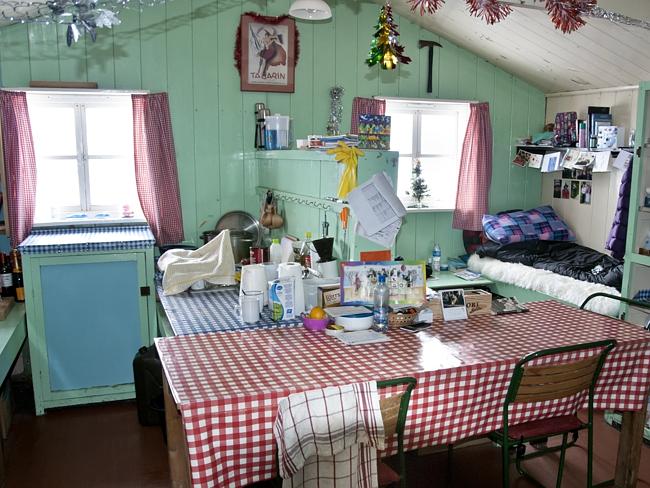
Rachel Morgan, who is the director of the UK Antarctic Heritage Trust, said that re-opening the Post Office will bring new life to the area again. In just a matter of weeks, there could be nearly 300 letters that have to be hand-franked and dispatched worldwide. It is a major job that can be overwhelming at times. After each letter gets its Antarctic stamp, it will travel by sea to the Falkland Islands and eventually be put into the international mail system.
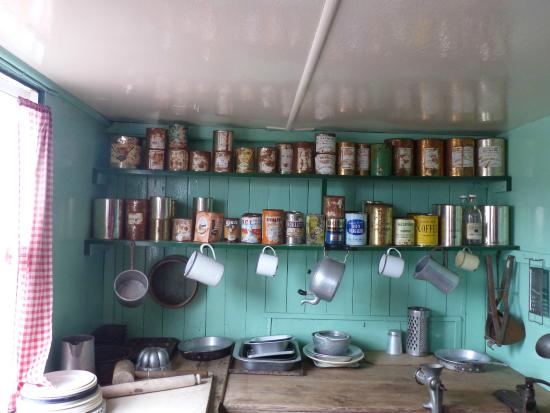
The nice thing about re-opening the Post Office is that all money from the stamps that are sold will go towards saving the historic Post Office and protecting it from the harsh weather conditions. Thankfully, Malaos will have the help of Tudor Morgan from Monmouthshire and Michael Powell who is from Crickhowell, South Wales and who has had 25 years of Antarctic experience.
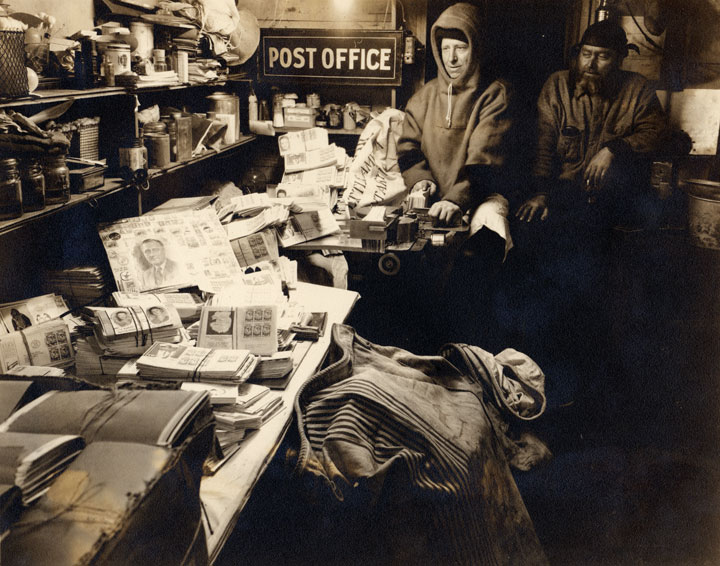
at the Little America Post Office,
1935.
Antarctica’s first Post Office was established on October 6, 1933. It was built when Admiral Richard E. Byrd and his crew left Norfolk, Virginia for Little America base camp in Ross Ice Shelf, Antarctica. This expedition was actually Byrd’s second of the five total. Byrd’s project was supported by President Roosevelt, who was an avid stamp collector. A conversation between the president and Byrd confirmed that Roosevelt thought it would have been nice for stamp collectors around the world to have commemorative stamps since Byrd was traveling to Antarctic. Roosevelt said that there should be a special postage stamp for those who only use the Little America Post Office. He was so engrossed by the whole idea he even designed a special stamp; a vertical one with a navy blue and white globe on it.
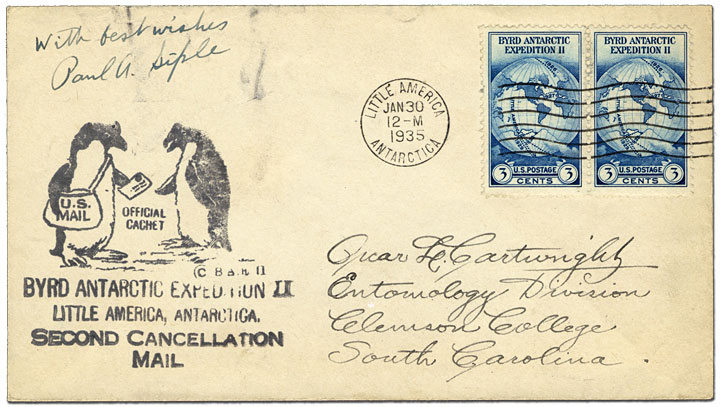
After the discussion with Roosevelt, the 3-cent Byrd Antarctic Expedition II commemorative stamp was issued on October 9, 1933. In order to offset the cost of transportation, there was a 50-cent surcharge that was added to the price of the stamp. However, that did not stop business. There were nearly 240,000 letters that went through the Little America Post Office.
A lot of the mail that was given to the Little America Post Office ended up setting sale by a steamer to Dunedin, New Zealand. From there it caught up with the expedition before it left Little America. The mail was forwarded to Dunedin until November 1, 1934.
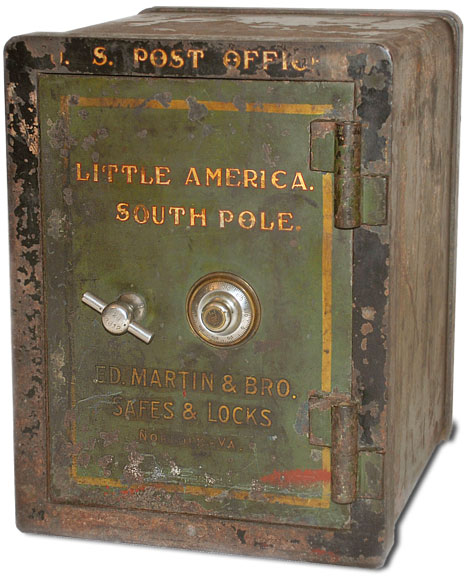
Dr. John Oliver LaGorce was the vice president of the National Geographic Society and was appointed the honorary post master of the Little America Post Office. Leroy Clarke, who was part of the Byrd expedition was then appointed the assistant post master. However, Clarke did not last very long at the job due to the stress of it.
After Clarke quit, the Post Office Department sent in Charles F. Anderson, who was a postal veteran and considered himself a traveling mechanic. He set off on November 7, 1934 and arrived at Little America in January, bringing with him an additional 40,000 letters. He also brought with him canceling machines, assorted postmarking stamps, inks, glues, and even a supply of pencils in case the ink froze in the writing pens.
From January 19 through February 4, 1935, Anderson canceled most of the covers that arrived with Clarke a year earlier and a majority of the letters he had brought as well. Anderson and the mail had returned with the expedition in March 1935. The Post Office was then officially discontinued on May 31, 1945. The Little America Post Office is now long gone and new communications reach Antarctica faster than steamship. Though weather is still a major factor when it comes to mail and science expeditions, a letter is still a major link to those back at home.
